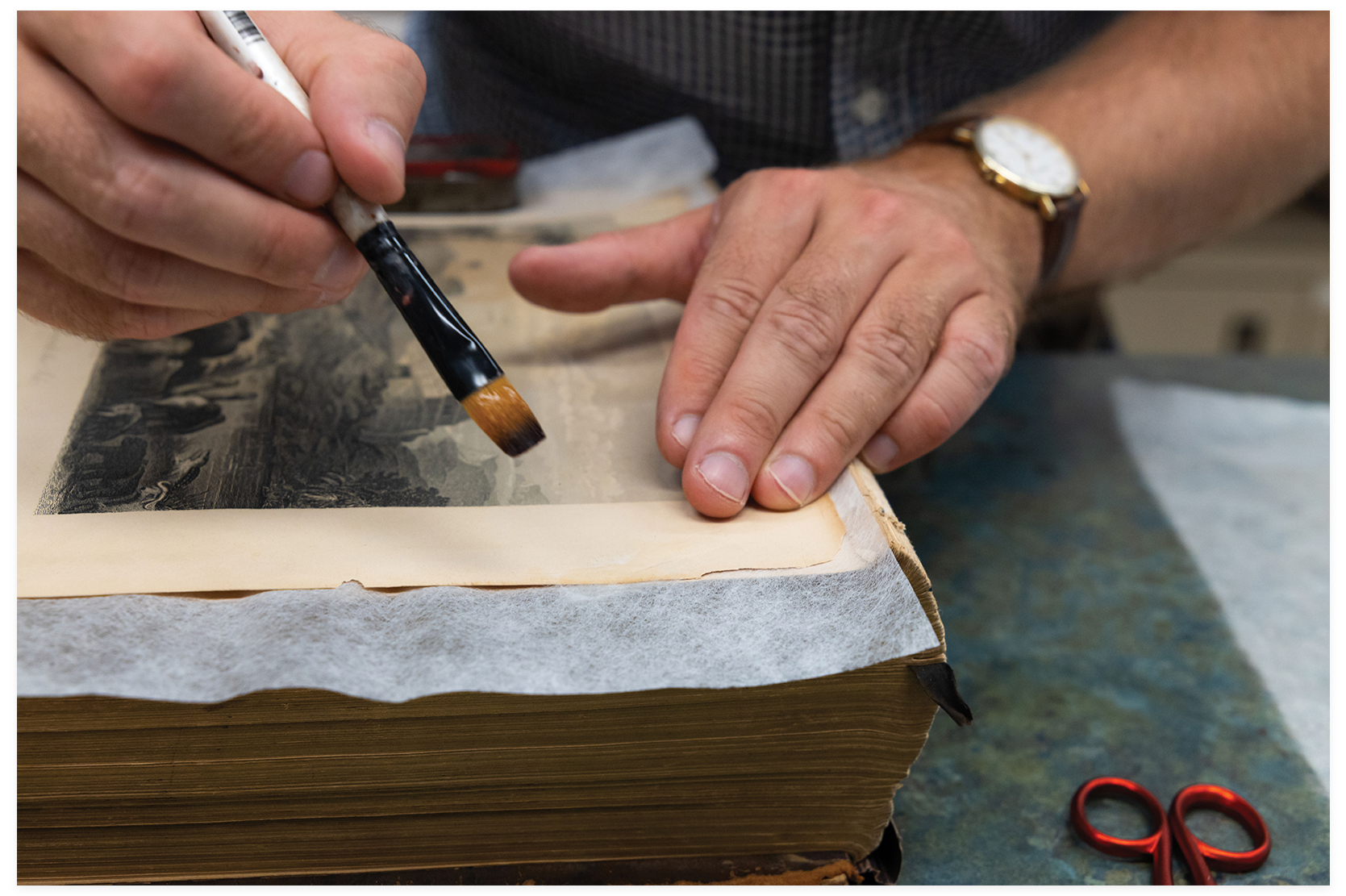Learn about his classes in paper marbling and bookbinding

James Davis intended to study biology at College of Charleston but had a change of heart—and major—after taking his first art history class.
Though thriving in academia, he wanted to be more directly involved with the subjects of his research, leading to a study abroad program in Florence, Italy, as well as a program in Israel on mortar and stone conservation. While working on research related to the Dead Sea Scrolls, Davis says he experienced a “crowning moment in a series of lightbulb moments,” finding his passion in books and paper, documents and archives.
Post graduation, Davis started working part-time with Charleston Library Society (CLS). More than a decade later, he serves as the director and conservator of CLS’s in-house book bindery, working to preserve some of the rarest volumes in the collection. Here, Davis discusses how he restores historic books.
CM: What does a typical day look like?
JD: There are days when I’m in the archives working with items; maybe I’m sewing a cover or paring down leather and applying it to a spine, all of those physical and very delicate, hands-on tasks that go into restoring a historic book or document. Or maybe it’s a commission; I repair a lot of dog-, cat-, and squirrel-eaten books. Then there are days when I share what I do through tours, working with interns, one-on-one class instruction, or teaching groups.
CM: Tell us about a meaningful book or item you’ve worked with.
JD: Our natural history collection is a really special and impactful assembly of botanical and bird prints. It’s from a rich era of European history where people were fascinated with all the new plants and animals being discovered. Charleston was such an important port that artists like John James Audubon were coming here and producing work. We have such incredible natural resources here; it’s a perfect fit.

CM: What kind of community involvement do you see at CLS?
JD: Making what we do known is an act of preservation in itself. If people don’t know about something, what’s its value? Charleston is huge for historic preservation of buildings, but when it comes to objects, it’s not as prevalent as somewhere like Washington DC. People walk past my window all the time and have no idea what kind of important work we’re doing. It’s a wonderful secret going on under people’s noses. We have so much to offer to people who value what we do, who love libraries and learning, new experiences, and fostering an intelligent community.
CM: Tell us about the workshops and classes you lead.
JD: So far, I’ve taught paper marbling, advanced bookbinding, and in November, I’ll be doing my first treasure-box class. The idea is to make specialized clam-shell boxes that hold books. It will be covered in book cloth and lined inside with marbled paper.
Lives: Hanahan
Education: Master’s degree in the conservation of books and archival materials from West Dean College
Favorite books in the collection: The incunables, the earliest examples of printed books in Europe
Current read: Listening to “The Wheel of Time” series by Robert Jordan, who was born in Charleston